A crowd has gathered on a gloomy day to see what is going on at the Canal Saint-Martin in Paris. Everyone was unable to take their eyes away from the scene unfolding in front of them. They all wanted to see the muddy waters recede as the authorities drained the river. What had been lurking in the canal’s waters all this time? They discovered things about the canal after two centuries that they had not expected in the least. What did they find down there, exactly?

After Draining A 200-Year-Old Parisian Canal, They Were Shocked By What The Water Revealed
It Was Time To Drain It
When the muddy waters receded, the authorities took a look at them. Of course, it’s not every day that you discover the secrets of the ocean’s depths. So when the building’s floor became visible, residents learned of a new chapter in the city’s past. Let’s just say none of them intended to come across what they did.
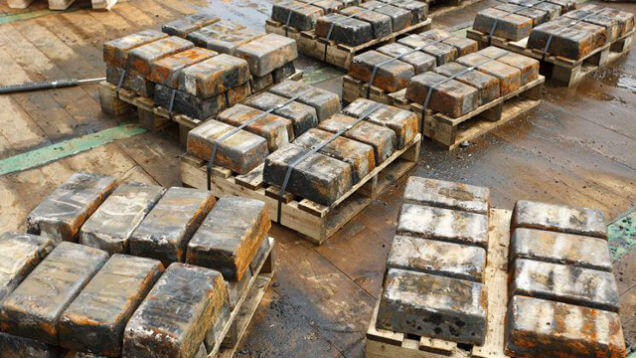
It Was Time To Drain It
An Important Source Of Water
The canal is 4.5 kilometers in length. It was completed after Napoleon Bonaparte I gave his approval to the project. This canal was designed primarily to provide clean drinking water to Paris’s 550,000 residents. However, he was well aware that the population would almost certainly continue to increase in the future.
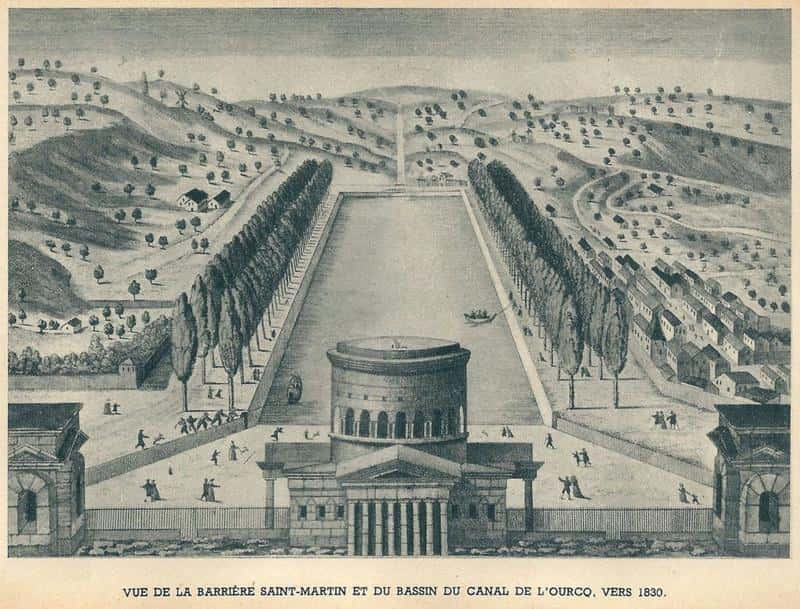
An Important Source Of Water
A Lot More To It Than That
Furthermore, he hoped that having access to clean water would help control the city’s health issues. Back then, there were several cases of cholera and dysentery. The Canal Saint-Martin encircles the city for nearly three miles. It also delivered food and construction materials to Parisians all over the city at the time.
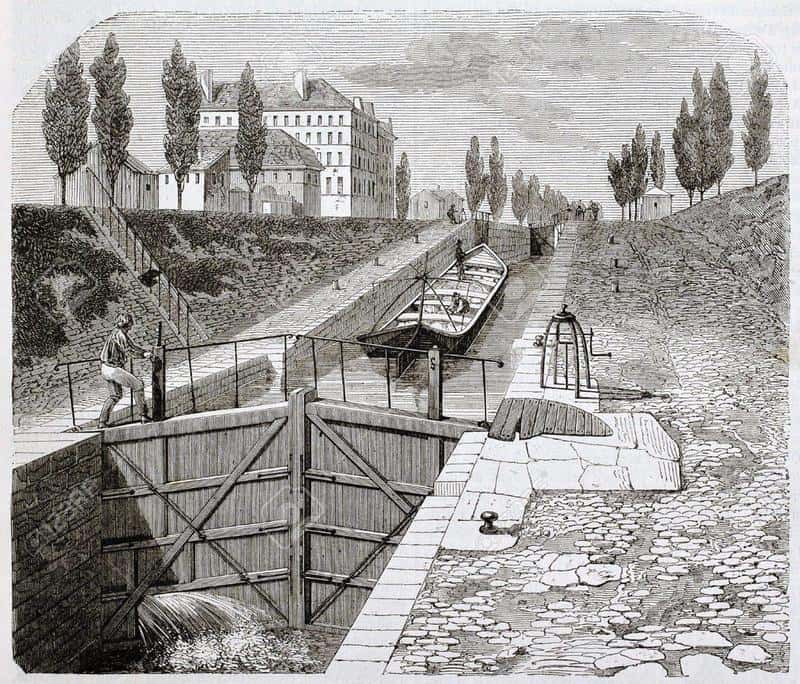
A Lot More To It Than That
Its Fascinating History
Two canals were constructed for the same intention in the decades that followed. The Canal Saint-Denis and the Canal de l’Ourcq were being built by authorities. The latter was 3.4 meters wide and 108 kilometers long. It ran from Port-Aux-Perches to the Bassin de la Villette, where it joined the Canal Saint-Martin. It’s best if you remember that they’re just a few hundred years old.
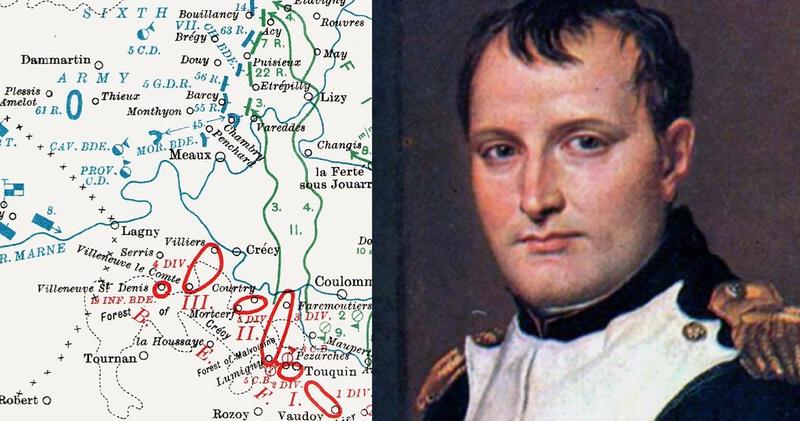
Its Fascinating History
During The French Revolution
The Canal Saint-Martin is the most well-known of the three. From the Bassin de l’Arsenal to the Place de la Bastille, it ran underneath the earth. Many people are familiar with the latter as the location of pivotal events during the French Revolution, which took place from 1789 to 1799. This was the scene of an unexpected assault on a jail. Thus, as you can see, it has a long and illustrious history. It was for this reason that people were curious to see what lay under the surface.

During The French Revolution
What The Canals Are Like Now
The canal is now a popular hangout for both locals and tourists. Young Parisians often congregate on the banks of the Seine and in the nearby cafes. Tourists, on the other hand, prefer to photograph landmarks and bridges. But why did the authorities try to drain the water from it in the first place?
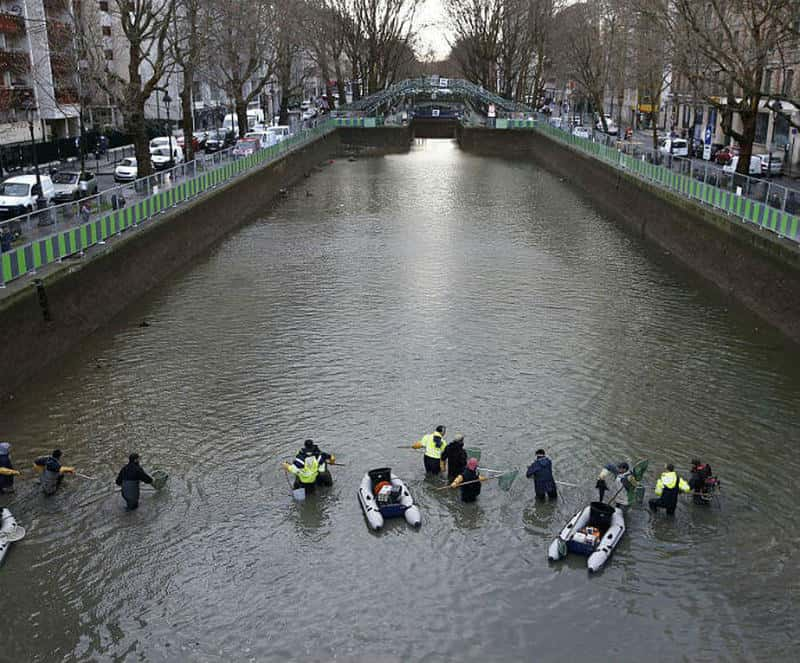
What The Canals Are Like Now
All The Weird Things At The Bottom
The canal has certainly seen a lot of changes in its two centuries of existence. Every ten to fifteen years, authorities attempt to empty it. They’d get rid of all that had accumulated at the bottom. This was not, however, a regular clean-up. So what was it about this time that was so different?
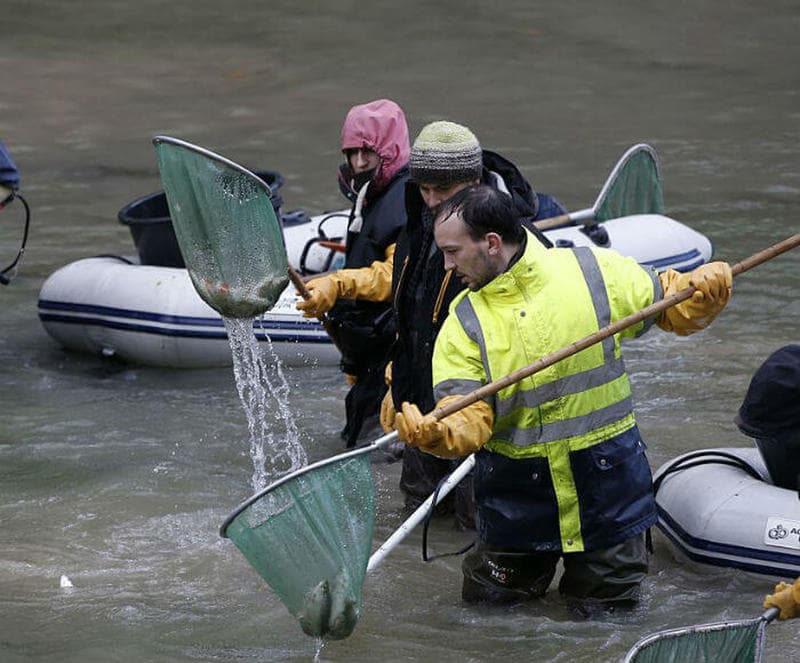
All The Weird Things At The Bottom
The Draining Procedure
Paris, also known as the City of Light, hides many major secrets. The muddy waters of this canal obscured some of them. What lay underneath their beloved Canal Saint-Martin piqued the curiosity of Parisians. The draining activity was being observed from afar. What would they find if they went there?
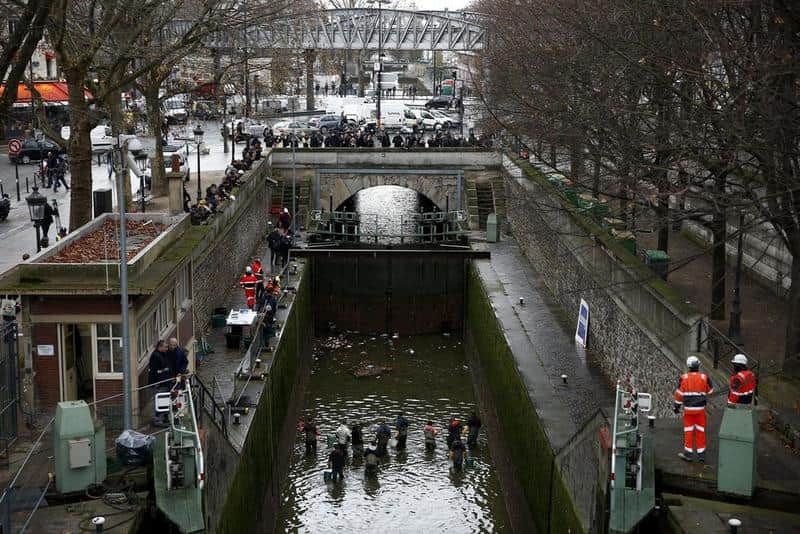
The Draining Procedure
Waste From The First World War
The canal was drained for the first time in 2001. They were able to remove over 40 tons of waste from the water at the time. Bullets, bombshells, and gold pennies from the First World War were among the exciting finds. Not only that, but they also discovered a car of the same age. It’s been a long time since that happened. What else would they come across in the water?
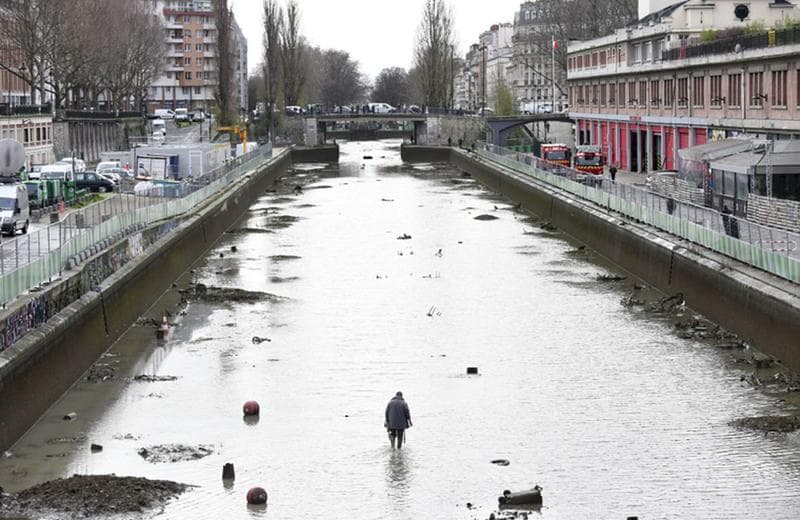
Waste From The First World War
How Much It Cost Them
The enormous task of draining the canal began. It will take three months to extract approximately 3 million cubic feet of water. Although the city had to spend more than $10 million on this, it was necessary. The crowd was eager to find out what had been hidden in the canal all this time…
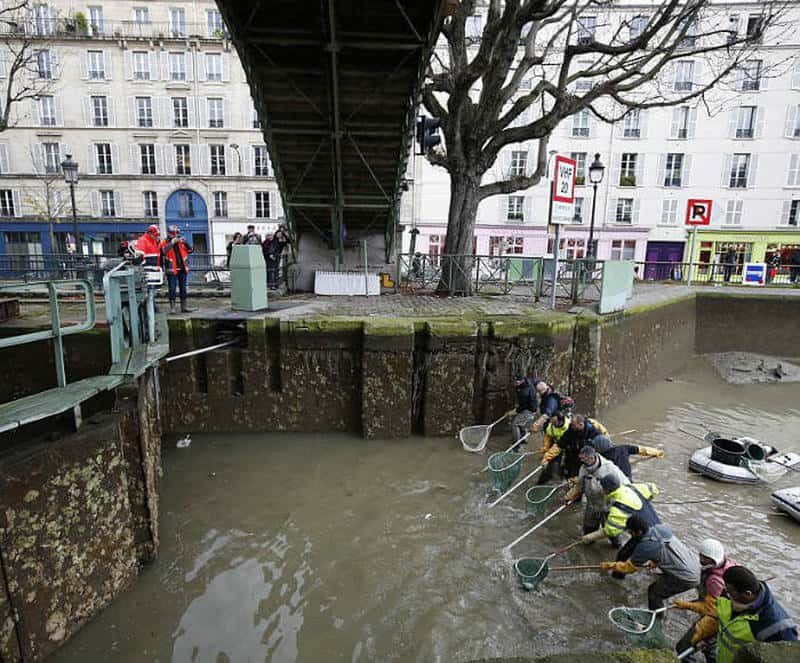
How Much It Cost Them
People Gathered To Look
They had drained the canal’s remaining water on January 7. After 15 years, the waterway’s secrets were finally being revealed. The bridges attracted people from all walks of life. They had to look at what the authorities had discovered. Curiosity was killing everybody.

People Gathered To Look
A Surreal Moment
It had to have been a big occasion. After all, it’s not every day that you get to see the Canal Saint-Martin without any water. People couldn’t believe what they were seeing. The sight of the canal’s bottom was unreal. They were all curious about what was on the canal’s surface.
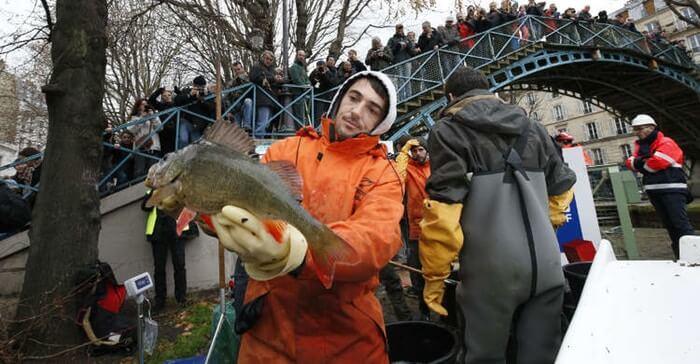
A Surreal Moment
The Living Things In The Water
The workers had to drain the canal until just 50 cm of water remained. Then, they waded through the canal in search of the objects and living “things” that had taken up residence there. Around five tons of carp, salmon, and bream were caught by the working crew! They then relocated the fish to better breeding grounds. Before relocating the fish, they carefully weighed and named it. Even though the new location would not be ideal for them, it was always preferable to the alternative.
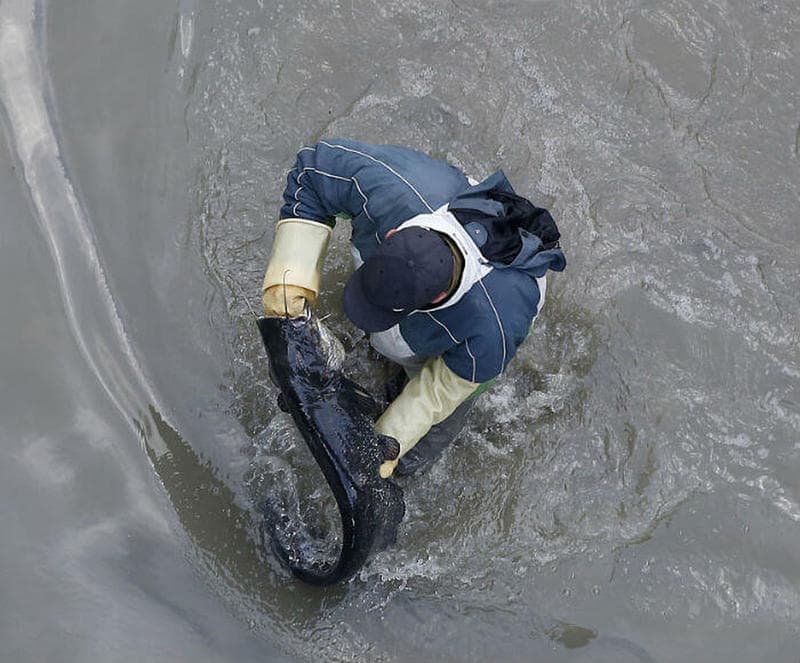
The Living Things In The Water
People Threw Garbage Into The Water
Various everyday artifacts found their way into the water’s depths. Among other stuff, there were bicycles. They turned out to be from the city’s Vélib car-sharing scheme. Around 14,500 bikes were added to the city’s streets as part of the program in 2007. Regrettably, they ended up in odd locations.
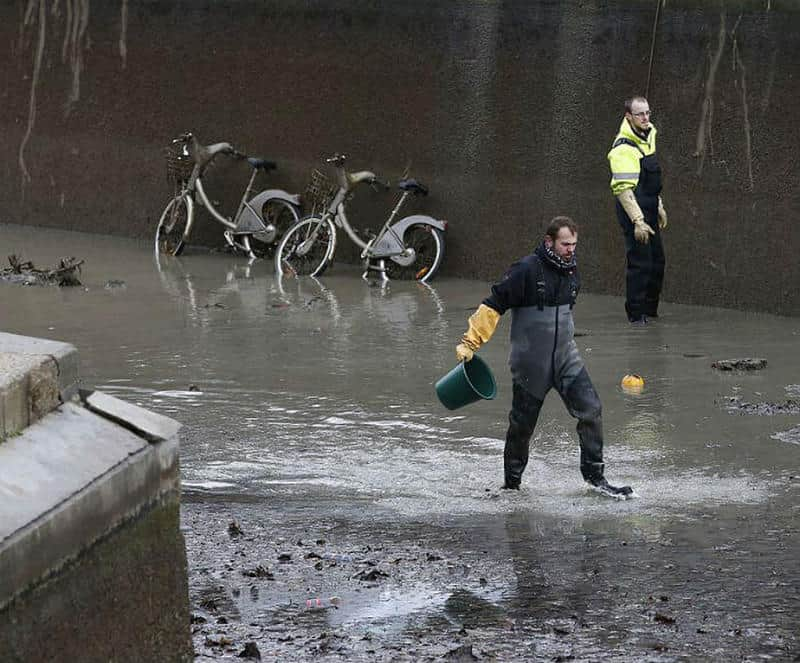
People Threw Garbage Into The Water
The Most Bizarre Findings
More objects surfaced as the drainage process progressed. Finally, at the bottom of the canal, there were mopeds, motorcycles, and wheelie bins! There was a bathroom down there as well. It was important to recover it because it had obviously contributed to the canal’s murkiness. Its presence there was thought to be amusing. This was not, however, the only surprising find down there. They also discovered larger artifacts at the bottom.
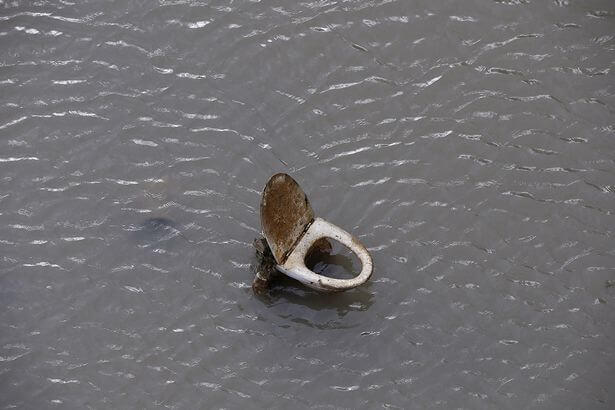
The Most Bizarre Findings
How They Must Have Gotten There
“It’s like some weird submarine treasure,” Marc, a witness, shared with The Guardian. He added, “I can’t believe the quantity of Vélibs in there. I guess they were stolen and thrown in afterward. It’s bizarre.” Furthermore, bicycles were not the only unusual items that found their way to the bottom.
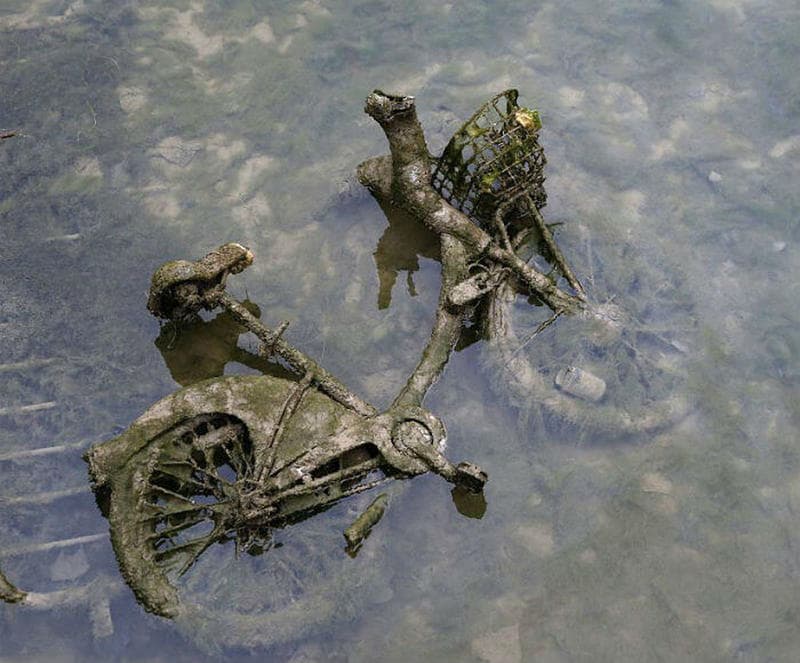
How They Must Have Gotten There
Paris Is Filthy
“That’s Paris for you,” an onlooker called Bernard said. “It’s filthy.” It seems to have gotten worse in recent years. He was also present when the well was first drained. “The last time, I don’t remember seeing so much rubbish in it,” he shared. “I despair. The youth are using it as a dustbin.”
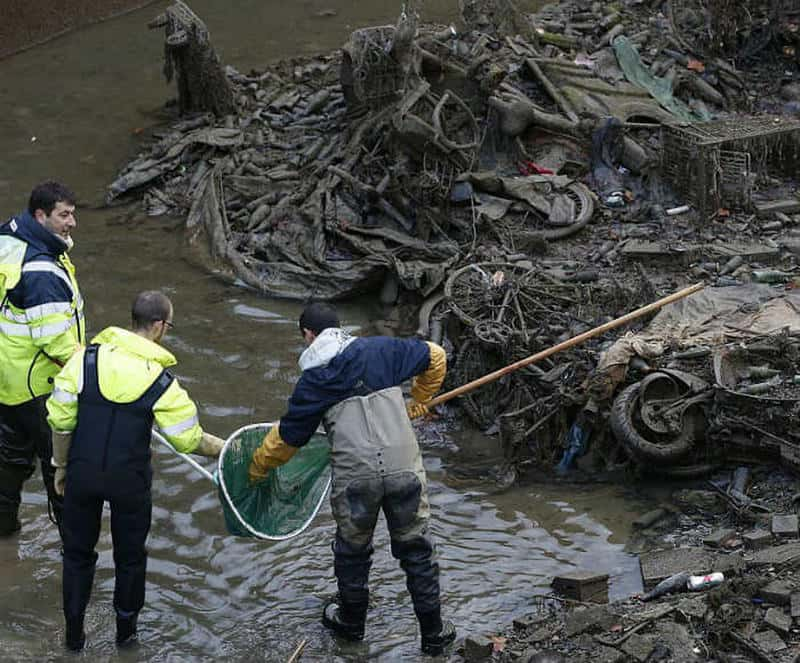
Paris Is Filthy
Even Weirder Than The Bikes
Wait until you learn that they have found a pair of bikes from down there if you thought bicycles were strange. Who knows how those objects came to be there? We’re hoping that somebody will come forward and tell us the story behind them. From there, things just got weirder and weirder.
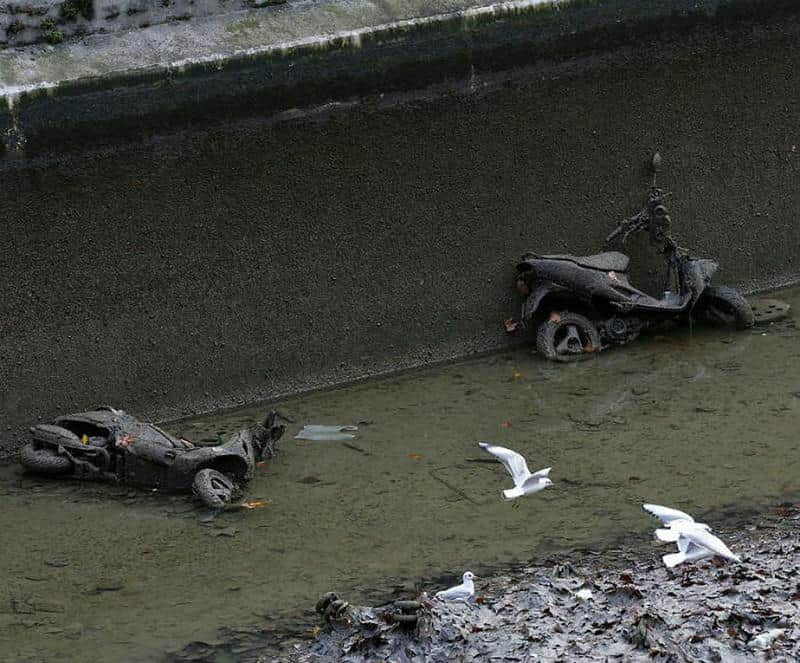
Even Weirder Than The Bikes
So Much Trash
Of course, they didn’t find only alive animals and strange things down there. Some objects were supposed to be discovered. Shopping bags, traffic cones, and glass bottles are all examples. However, these results didn’t seem to pique anyone’s interest. Instead, all were eager to discuss the unusual products!
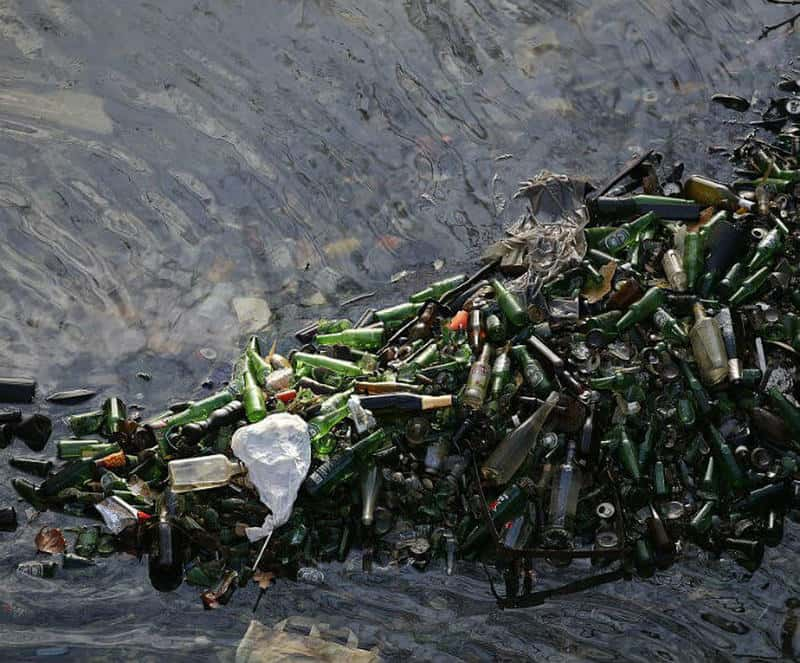
So Much Trash
A Random Office Chair
For starters, none of them knew how an office chair ended up there. The witnesses were skeptical of the discovery. Is it possible that an office worker took this to the 10th arrondissement? The idea might seem absurd to you, but it made us smile just thinking about it.
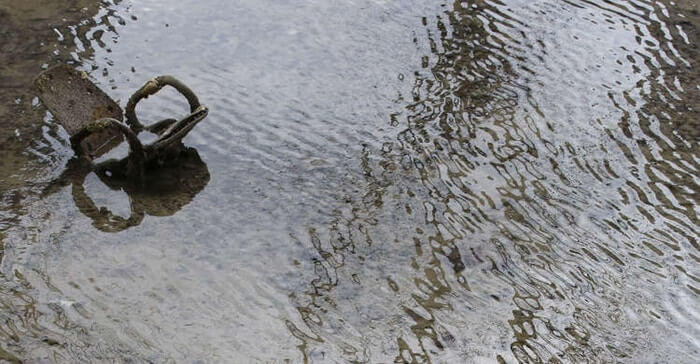
A Random Office Chair
There Was A Suitcase
It’s a lot of fun to develop ideas on how these kinds of stuff got there. Another curious thing emerged from under the murkiness as they continued to drain the water. They came across a very revolting suitcase at the canal’s bottom. Is it there because it was thrown there?

There Was A Suitcase
A Traffic Cone
Another odd thing that has people scratching their heads is this one. This traffic cone had no choice but to be retrieved from the canal’s base by a crew member. Who could possibly have put it there? We’re betting on a vandal who felt compelled to dispose of the evidence as soon as possible.’
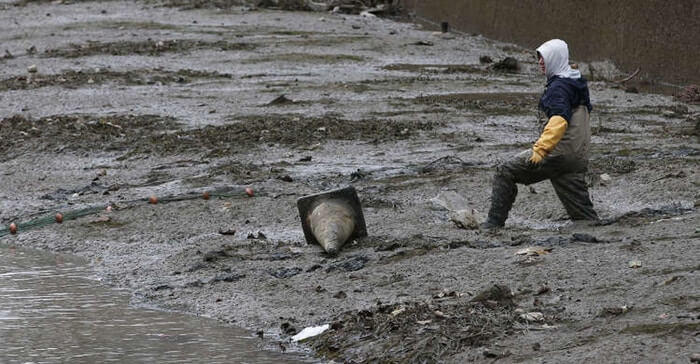
A Traffic Cone
A True Shopping Destination
On the Canal Saint-Martin, they were also able to find a shopping trolley. This piqued people’s interest in the story. After putting their bags into the car, did a shopper unintentionally drive it into the canal? In any case, we can deduce from this that Paris is an excellent shopping destination.
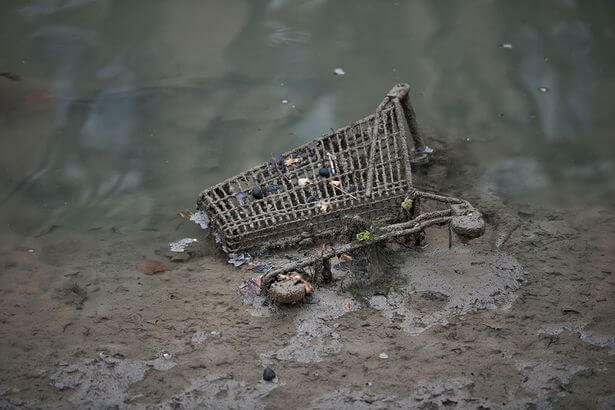
A True Shopping Destination
Save The Fish
They managed to drain the water from the Canal Saint-Martin until only 20 inches of water remained. They had to get the fish to safety first. The cleaning crew spent three days in the water catching carp, salmon, and bream. They captured the animals and relocated them to a separate section of the river.
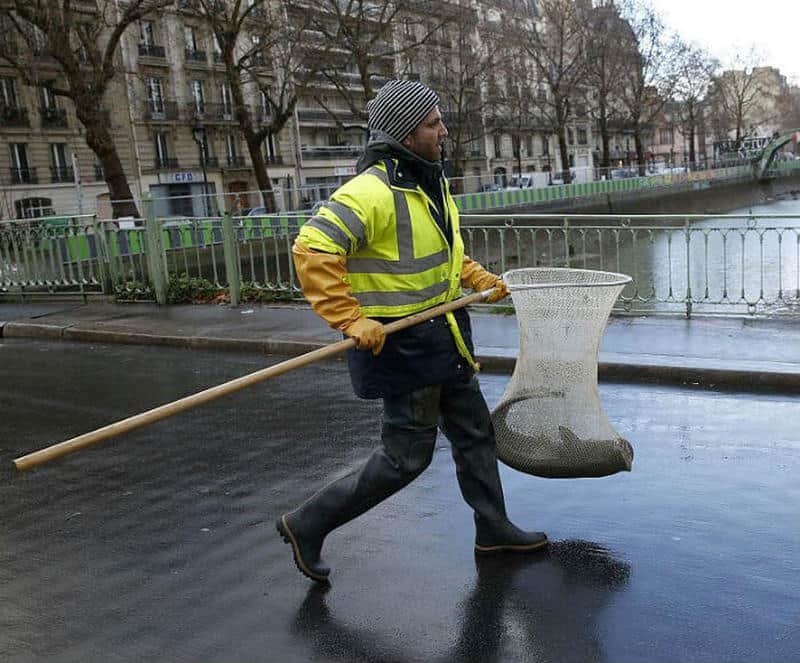
Save The Fish
Swimming There Might Be Possible
Even though seeing all the trash in the canal was disheartening, there is still hope. The discoveries brought attention to the city’s littering epidemic. Authorities used the opportunity to talk about the situation. “If everyone mucks in and avoids throwing anything into the water,” said Celia Blauel when she spoke to the MailOnline, “we might be able to swim in the canal in a few years.” She is the deputy mayor.

Swimming There Might Be Possible
It Was An Expensive Process
No one would have realized how serious the issue was if the waterway had not been drained. The reality is that the canal region is known as prime real estate. The Parisians had to pay a high price for it. Only real estate assets located in the arrondissement command prices as high as $9,000. They had no idea these things were lying so close to their houses, we’re sure.

It Was An Expensive Process
Why The Area Is Expensive
The waterway has always looked lush and aesthetically appealing, which is one of the reasons property prices are so high there. In reality, many artists have been inspired by it. Street art can be seen on the bank’s walls, and the institution has a large multimedia room dedicated to art.

Why The Area Is Expensive
It Took Two Decades
All three canals were dug across the length of Paris over the course of two decades. They make up a total of more than 80 miles when combined. The Canal Saint-Martin is the most famous among the three. It stretches for 68 miles and links the Seine River and the Canal de l’Ourcq.
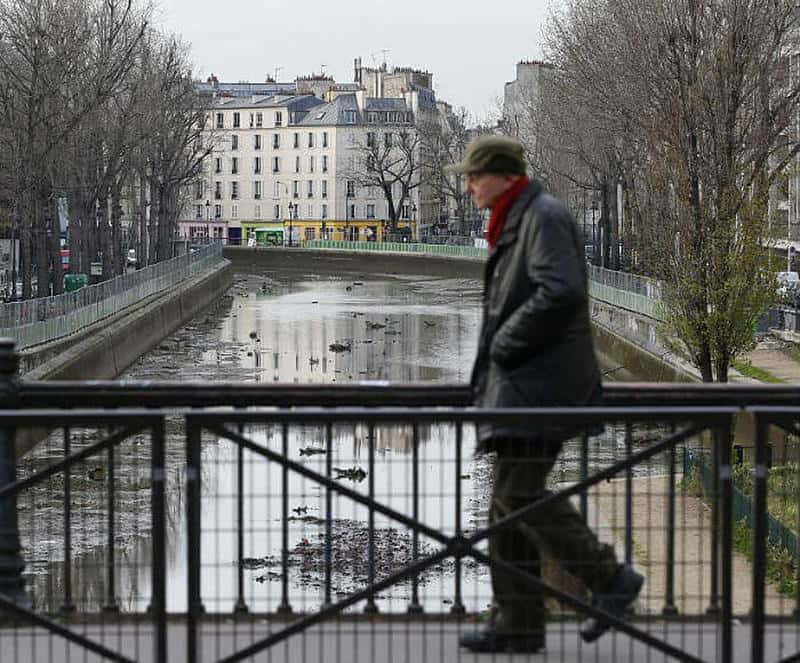
It Took Two Decades
Both Tourists And Parisians
Since its inception, the Canal Saint-Martin has attracted both Parisians and tourists. It has always been a spot with a unique allure. They’re all given a look at the badges. They could also pass across all of the locks and road bridges along the way.
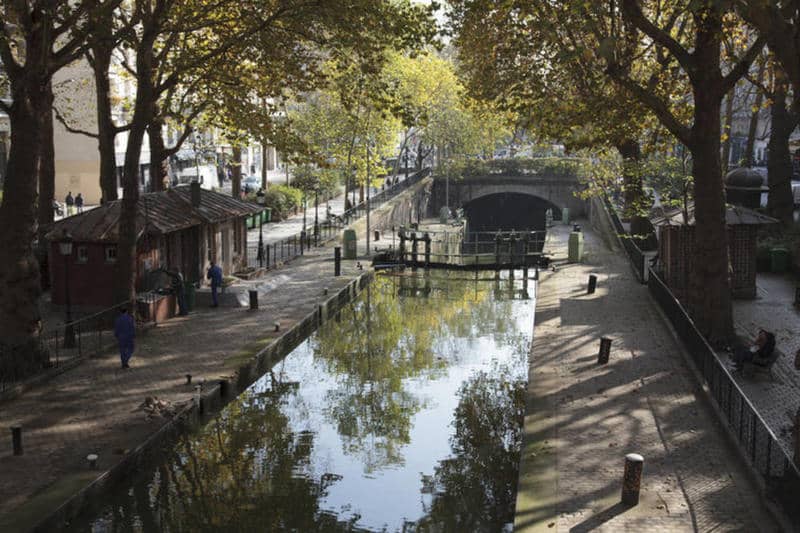
Both Tourists And Parisians
The Amazing Nightlife
If you’re familiar with Paris, you’re probably aware that the Canal Saint-Martin neighborhood has a vibrant nightlife scene. The neighborhood, which was once peaceful, would attract a large number of young people. Many citizens assumed that this would only result in more pollution in the canal. They discovered that this was the case in 2016.
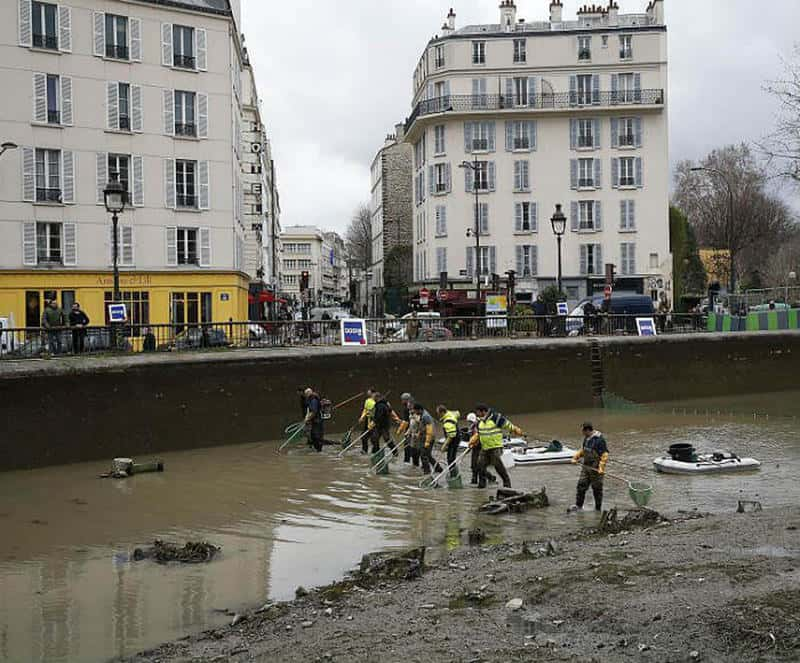
The Amazing Nightlife
Construction Of The Canal
On Napoleon I’s orders, the canal’s constrictions began in 1802. Paris had a population of about 550,000 people at the time. That number did not appear to be going down any time soon. Napoleon believed that the waterway would bring fresh water to the city and enhance the citizens’ health at the time.
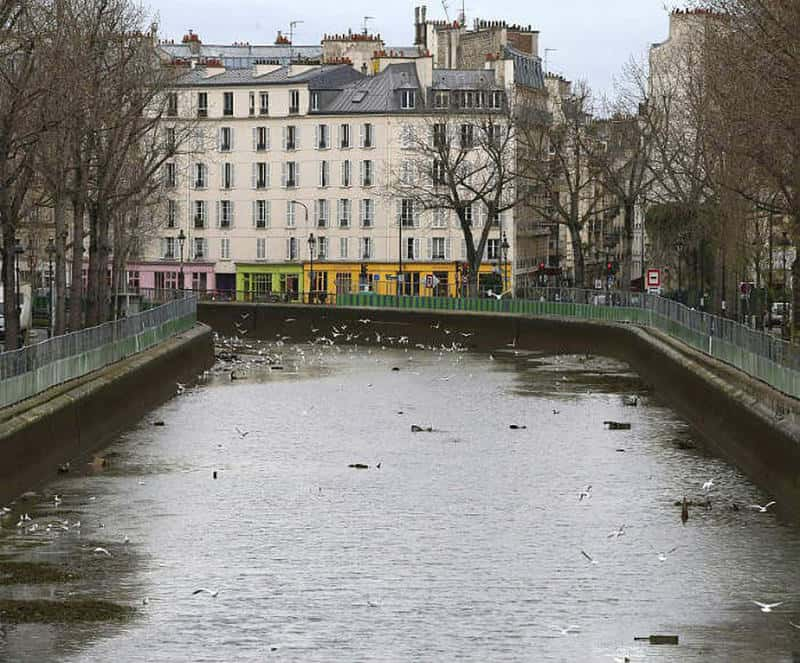
Construction Of The Canal
The Route
The canal runs from the Seine’s Bassin de l’Arsenal to below La Bastille. The latter is the location of a jail that was demolished during the French Revolution. It then emerges near the Place de la République before ascending to the Bassin de la Villette in the north. It meets the Canal de l’Ourq there.
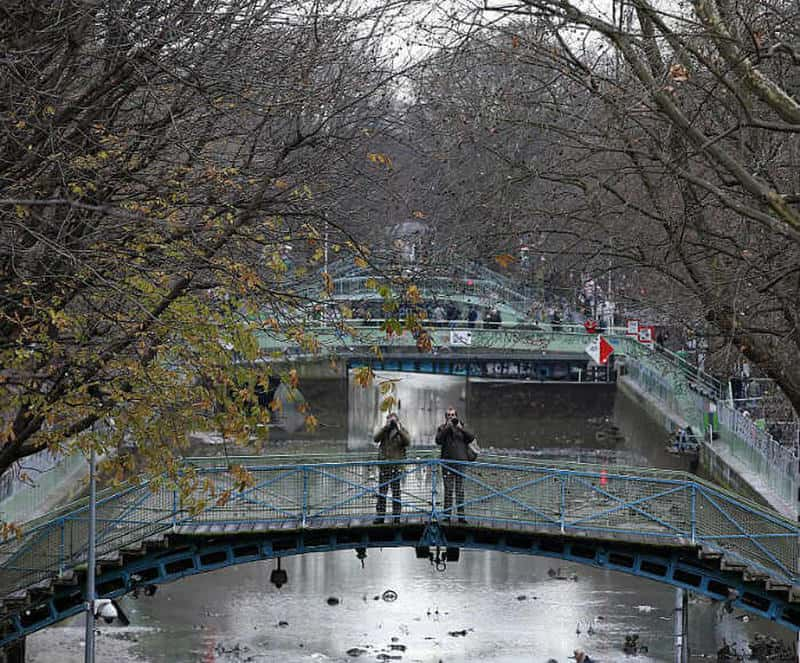
The Route
Strange Things In The Water
What was the object that piqued your interest the most? They discovered tables, shopping carts, suitcases, garbage cans, toilets, bicycles, and bikes at the bottom, just in case you forgot. A vintage stereo was also on the floor, in addition to the previously listed products. You never know what you’ll find when you go there.

Strange Things In The Water
Way Too Many Bottles And Cans
They discovered a lot of cans and bottles when draining the water out of the Canal Saint-Martin. If you have any idea how many there were? We have our doubts that you correctly answered the query. They found hundreds of thousands of these things down there, after all.
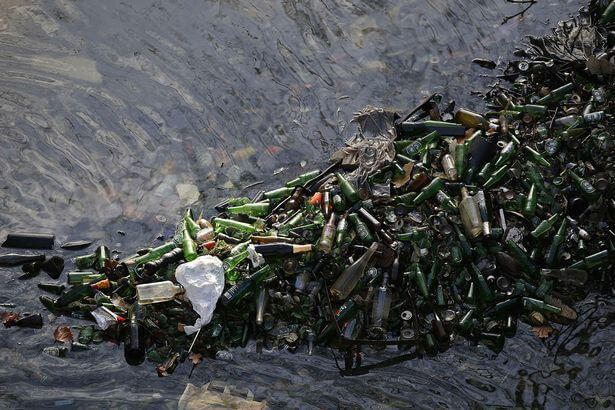
Way Too Many Bottles And Cans
How Long It Is
The Canal Saint-Martin, which passes through the heart of the capital, is three miles long. It runs through the 10th arrondissement, which is best known for being a fashion-forward neighborhood. The region has recently gained popularity for its nightlife and tourist attractions. It’s a must-see on your next visit to the City of Lights!

How Long It Is
More Interesting Finds
As people gathered alongside the canal to get a closer look at what was going on, more and more artifacts were excavated and discovered in the murky water. The canal is emptied and cleaned once every 10-15 years, providing the public plenty of opportunity to toss, lose, and drop all manner of bizarre goods into the water. On the muddy ground here sits a submerged old-school stereo. We’re left scratching our heads, wondering how it got there in the first place.

More Interesting Finds
Crowds Gathering
Locals would understandably be interested in knowing more about the draining and cleaning process – after all, who wouldn’t be? As employees resumed their job, onlookers gathered along the canal, watching the whole affair unfold. Perhaps Parisians were searching for a long-lost item in the middle of the chaos? Perhaps they were seeking a calm type of entertainment that included some time spent outdoors?

Crowds Gathering
Vintage Items
Despite the fact that this technique is conducted on a regular basis, vintage things such as this camera are still unearthed during the cleaning process due to the canal’s age. It’s intriguing to think about how these artifacts ended up at the bottom of the canal in the first place, especially because they predate the canal’s previous cleaning. People may dump stuff in the canal on a daily basis, whether purposefully or inadvertently. Yet, somehow, artifacts that are older than expected are always uncovered.

Vintage Items
Sentimental Discoveries
More and more artifacts surface and are uncovered as the canal’s 90,000 cubic meters of water are drained. You’d expect to come across ancient and filthy objects, and you’d be correct. There were, however, some more unexpected finds. Take this stuffed animal, for example. In comparison to everything else we’ve seen thus far, it looks to be new. In this image, the contrast between the fairly immaculate plush animal and the dirty motorbike under it is almost unsettling.

Sentimental Discoveries
Anger Management
This snapshot, in our opinion, gives a comprehensive picture. To be honest, that might be the basis for an entire tale. Submerged in murky water, the dirty chair… It’s entirely encrusted with moss… It’s rather haunting when you think about it. Again, our minds wander to numerous events that may have led to this chair being tossed into the canal in the first place. Is it possible that it was a stressful situation? Is it conceivable that it was an unfortunate accident? There are several alternatives.

Anger Management
Lengthy Ordeal
Operators must spend hours ensuring that everything runs well as the water is progressively drained into the Seine River. From moving fish that had gotten into the canal to entirely renovate the canal’s four double locks. Of course, any worn-out tiny parts must also be replaced. From start to finish, the full treatment would take around three months.

Lengthy Ordeal
Team Effort
Given the complexity of this project, it’s only logical that a large number of individuals will be involved in its completion. As shown in this photograph, dozens, if not hundreds, of personnel are involved in ensuring that everything is done correctly and swiftly. Not to mention without putting anyone’s safety in jeopardy. While machinery is employed for the majority of the endeavor, persons must also do certain duties that their equipment cannot.

Team Effort
Heavy Lifting
It’s a dangerous process since so many things may go wrong at any time. The canal is being emptied for the first time since 2001. Given that such an occurrence occurs only once per decade or so, it is understandable that it would be thrilling. Workers must make several preparations in order to take on such a large undertaking. It is difficult for the municipality to obtain all of the required machinery and equipment.

Heavy Lifting
Other Locations
It’s only natural that other nations clean out their water supplies and drains on a regular basis now that we’ve seen what occurs in the Parisian canal every decade or so. Many unusual objects have been discovered when cleaning sewers and pipelines in the United Kingdom. In fact, there are several goods that you wouldn’t expect to discover in such a place. Let’s take a look at some of the things that drain cleaning firms have noticed.

Other Locations
Animals
Nobody is accusing anyone of causing intentional damage to animals, but what is one of the most common objects discovered in drains? Animals, to be exact. This isn’t exclusive to the United Kingdom; it happens all across the world. Not only do we have little animals like cats and dogs, but also big animals like cows and sheep! Many different creatures have been retrieved from sewers uninjured. Although there have been stories of alligators wandering the sewers in the United States, most people regard this as an ancient urban legend.

Animals
Solid Gold
Despite the fact that sewers are meant to collect rubbish, not everything that ends up in them is useless. Workers at a treatment center in Japan, for example, earned 5 million yen in gold in 2009. They discovered the rich metal while sifting through the muck. Because of the vast number of precision equipment makers in the area, they were able to utilise the metal. As a result, they found 1,890 grams of gold in a ton of rubbish!

Solid Gold
Luxury Watches
Indeed, there is more luck in the sewers than we realize. In 2012, a sewer worker named Aaron Large in England discovered four expensive watches in the sewers. Unfortunately, they weren’t your average watches. He uncovered a £21,000 Rolex Oyster Perpetual Cosmograph in 18-carat gold, as well as another Rolex and two more high-end items a few days later. One of the watches was subsequently returned to its rightful owner, while the other three were tragically fabricated. Despite this, Aaron was rewarded by his supervisor for his efforts.

Luxury Watches
Half A Car
Some obstructions in sewers and drains are more problematic than others. A sewer cleaning firm, for example, uncovered half of an abandoned Mini vehicle in 2014, making it one of the biggest objects ever unearthed in London. While an incredible feat, unblocking the capital’s sewers that year cost a whopping £70 million. We’re sure whoever parked that automobile was sorry.

Half A Car
Random Jaw Bones
No matter how much time is spent researching and researching artifacts discovered in sewers, some of them remain unidentified. That was the situation in 2009 when a strange jaw bone was discovered in Canadian sewage. The bone might have come from any number of herbivorous animals. Because Canada has a higher-than-average distribution of dinosaur bones, bone finds aren’t as startling. Finding a bone in a finished tunnel, on the other hand, is uncommon.

Random Jaw Bones
Toy Soldiers
As the saying goes, “life imitates art.” So workers in Scotland found themselves in remembrance of Toy Story. In 2010, a crew of sewer workers recovered a whole platoon of toy soldiers. After washing the toys, they were put on a plaque and hung on the office wall for several years. While the youngster who lost the toys did not have a happy ending, we’re sure it brightened the day of the staff!

Toy Soldiers
